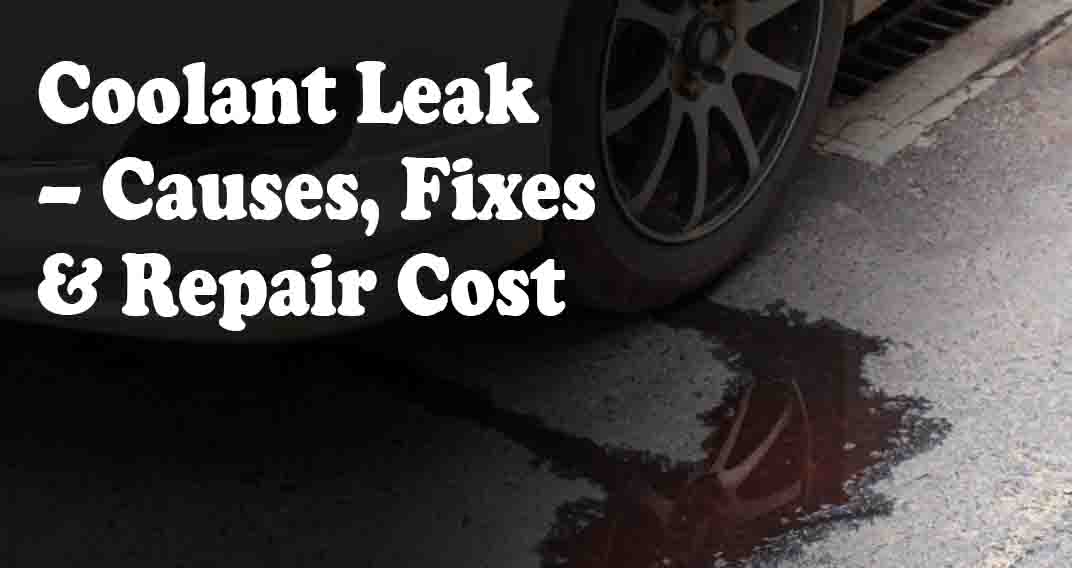Maintaining a vehicle’s cooling system is paramount for optimal engine performance and longevity. A vital component of this system is the coolant reservoir, which stores and circulates coolant throughout the engine to regulate its temperature. However, leaks in the coolant reservoir can pose a serious issue, potentially leading to overheating and costly engine damage if left unattended.

Image: uniqueautomag.com
This guide will provide a comprehensive overview of how to effectively fix a coolant reservoir leak, empowering you with the knowledge and step-by-step instructions to restore your vehicle’s cooling system to optimal functionality.
Identifying the Source of the Leak
Before attempting to repair the leak, it is crucial to pinpoint its exact location. Begin by parking the vehicle on a level surface and allowing the engine to cool down completely. Once cool, open the hood and carefully inspect the coolant reservoir for any visible signs of leakage. Look for cracks, holes, or loose connections where coolant may be escaping.
If no apparent external leaks are visible, pressurize the cooling system using a coolant pressure tester. This device will help identify any leaks that may not be immediately apparent during a visual inspection. If the pressure drops rapidly, it indicates a leak in the system.
Materials Required for Repair
Once the source of the leak is determined, gather the necessary materials for the repair:
- New coolant reservoir (if necessary)
- Replacement coolant
- Radiator sealant (optional)
- Wrenches or sockets
- Screwdriver
- Rags or towels
- Safety glasses
Step-by-Step Repair Instructions
Follow these steps to safely and effectively repair the coolant reservoir leak:
- Safety First: Always wear safety glasses when working with automotive fluids.
- Drain the Coolant: Locate the drain plug at the bottom of the radiator and open it to drain the coolant into a suitable container.
- Disconnect the Reservoir: If the leak is severe or requires replacing the coolant reservoir, disconnect the hoses and electrical connections attached to it.
- Remove the Reservoir: Use a wrench or socket to remove the bolts or screws securing the coolant reservoir and gently lift it out.
- Inspect and Clean: Thoroughly inspect the reservoir for any cracks or damage. If the damage is minimal, you can attempt to seal it with radiator sealant.
- Replace the Reservoir: If necessary, install the new coolant reservoir and secure it with the bolts or screws.
- Reconnect Hoses and Electrical Connections: Reattach the hoses and electrical connections to the new or repaired coolant reservoir.
- Refill Coolant: Slowly pour the replacement coolant into the reservoir until it reaches the designated level. Use a funnel to avoid spills.
- Check for Leaks: Start the engine and allow it to run for a few minutes. Check for any signs of leaks around the coolant reservoir and hoses.
- Retighten Connections: If no leaks are visible, stop the engine and let it cool down. Retighten all hose connections and bolts to ensure a secure fit.

Image: gmundcars.com
Preventive Measures to Avoid Future Leaks
To prevent coolant reservoir leaks from recurring, consider these preventive measures:
- Regular Coolant Maintenance: Regularly check and replace the coolant according to the manufacturer’s recommendations.
- Periodic Inspections: Periodically inspect the coolant reservoir and hoses for any signs of wear or damage.
- Avoid Overfilling: Avoid overfilling the coolant reservoir, as this can put excessive pressure on the system.
- Use Quality Components: When replacing the coolant reservoir or hoses, use high-quality components to ensure longevity and reliability.
How To Fix Coolant Reservoir Leak
Conclusion
Fixing a coolant reservoir leak requires proper diagnosis and thorough repair procedures. By following the steps outlined in this guide, you can effectively address this issue and restore the integrity of your vehicle’s cooling system. Remember to conduct regular maintenance and inspections to prevent future leaks and ensure the optimal performance of your vehicle.
If you encounter difficulty during the repair process or suspect a more complex issue with the cooling system, seek professional assistance from a qualified mechanic to avoid further complications.